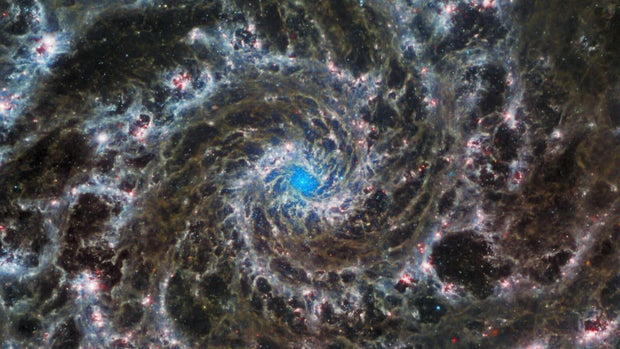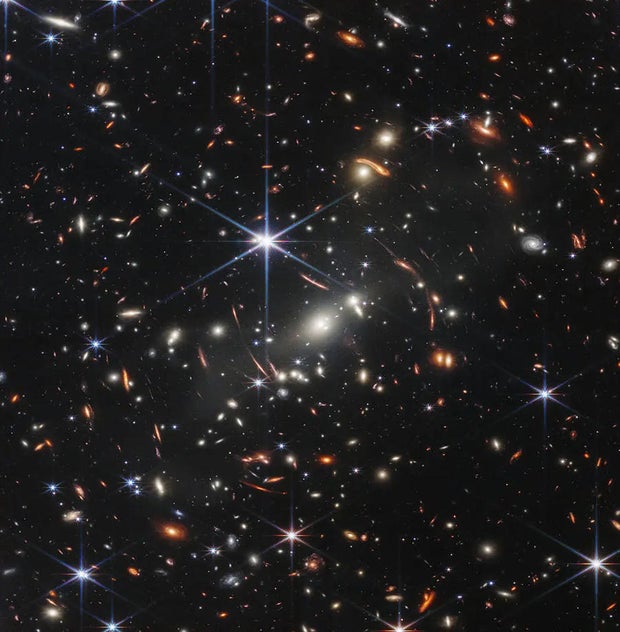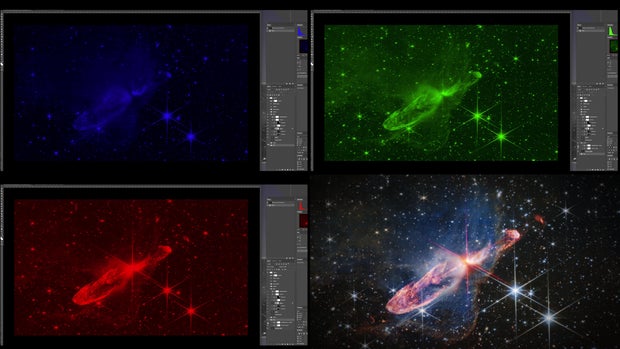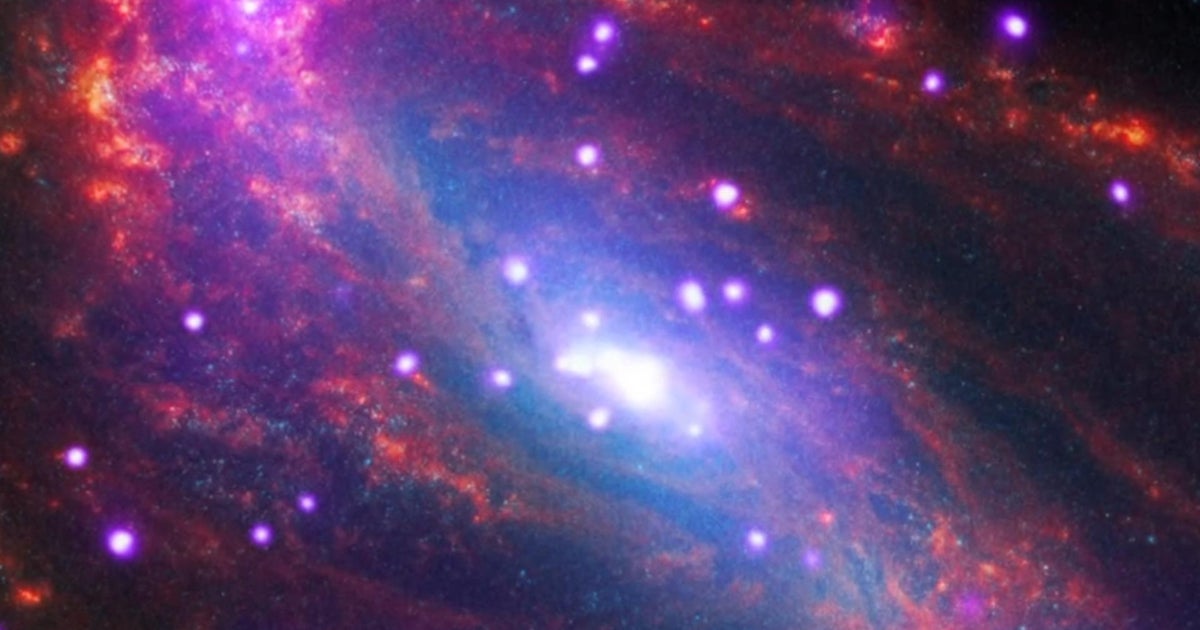CBS News
The James Webb Space Telescope’s continued gifts
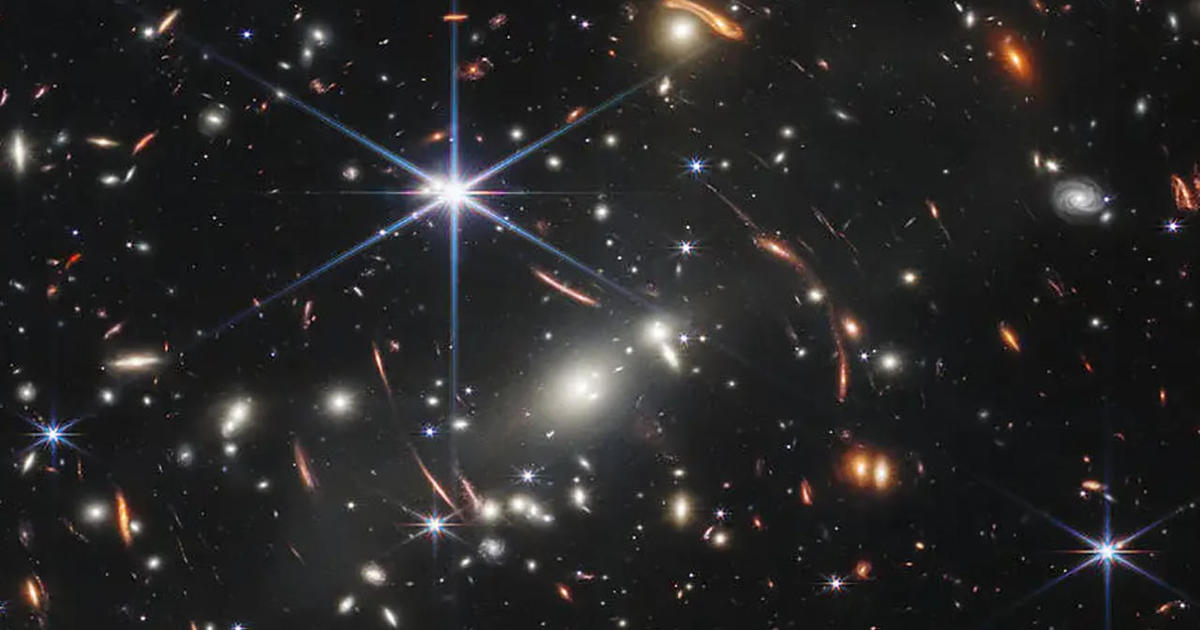
The story of Christmas features a miraculous astronomical sight. But this Christmas, we’re blessed with an abundance of new miraculous visions from the skies, courtesy of the James Webb Space Telescope, which lifted off on Christmas Day two years ago … from Jupiter and its rings (a mere 385 million miles away), to the Carina Nebula (7,500 light-years away), the Phantom Galaxy (32 million light-years away), and the deepest regions of space (13 billion light-years away).
NASA, ESA, CSA, STScI
In 1989, NASA began thinking about a successor to the Hubble Telescope. The new machine would have massive gold-plated lenses that could detect infrared light – invisible to our eyes, but capable of passing through dust and gases, 100 times farther into the universe. The Webb would also be much bigger than the Hubble: three stories tall and 70 feet wide, too big to fit into any existing rocket. NASA’s solution? Fold it up.
Scott Willoughby oversaw the Webb’s construction at Northrup Grumman. Ten days before launch in 2021, he explained to “Sunday Morning” the complexity of the unfolding process: “They have things that are called single-point failures – this has to move this way, and there’s only one of ’em. And Webb has over 300 of those.”
Three hundred things that had to go exactly right.
It took almost seven months for the telescope to unfold, calibrate, and reach its orbit, a million miles from Earth. So now, on the second anniversary of the launch, we asked how it went.
“It literally went perfect, as close to perfect as one could’ve even imagined,” Willoughby said. “People actually asked after, ‘Did you overblow how hard this was?’ And the truth was, practicing for everything as if it could go wrong was the best preparation for making it go right.”
NASA, ESA, CSA, STScI
Because infrared is a form of heat, it had to get cold—minus 400 degrees. Even the sun’s heat would blind the telescope to the faint infrared signals from space. And so, a large sun shield – an umbrella, basically – was deployed to block out any shred of the sun’s light from reaching the telescope’s lenses. “There’s only one star in the entire universe we’ll never see, and it’s ours, it’s the sun,” Willoughby said.
Finally, the science could begin.
At NASA’s Space Telescope Science Institute in Baltimore, Jane Rigby, the Webb’s chief scientist, talks to the telescope from the flight control room, drawing the data that has been collected. “The elevator pitch for the Webb Telescope was to get the baby pictures of the universe,” Rigby said. “We have delivered exactly what we promised on that topic. We’ve gone from basically ignorance about what that first billion years of the universe was like, to having it in crisp high definition.”
Another Webb mission: examining distant planets, to see if any of them have atmospheres like ours, maybe to find one human beings could live on. But how can a telescope know what’s in a distant planet’s atmosphere? Turns out, when a planet passes in front of its star, the elements of its atmosphere—oxygen, nitrogen, whatever—block specific bands of light. Analyzing how the spectrum of light changes can reveal what the atmosphere of that planet is like.
The Webb has already studied the atmospheres of dozens of distant planets. On one, the exoplanet K2-18 b, it found carbon dioxide and methane, which suggests that it has oceans. [It’s a mere 120 light-years from Earth.]
Rigby said, “It’s such a joy that this telescope is working so well, because it was built really well by the engineers.”
But not all the Webb headlines have been triumphant. One, in June 2022, didn’t sound good at all:
But Scott Willoughby was not worried: “We designed the mirrors to get hit by micrometeorites – you know, small particles, say grain of sand or something like that. But when you’re truly talking about one small spot in something 22 feet across? The impact of it was really irrelevant. It actually didn’t impact science at all.”
But there were also some questions about the photos. Was NASA manipulating them? Colorizing them? NASA image experts Joe DePasquale said, “That question actually comes up a lot: ‘Is what Webb sees real?'”
He and Alyssa Pagan can answer questions about colorizing, because they’re the ones who do it. “It’s our job to be able to translate that light into something that our eyes can see,” DePasquale said.
As it turns out, there’s a lot of light that people can’t see, like ultraviolet light, which bees can see; or infrared light, which pit vipers can see. Ultraviolet light travels in very short waves; infrared waves are much longer. And that’s what guides the colorizing process.
Pagan said, “We’re taking the shortest wavelengths, applying the bluer color; the middle wavelength, that’s the green; and then the longest wavelength gets assigned the red. This is what we think is the truest representation of what we could possibly see, if we could see an infrared light.”
NASA, ESA, CSA, Joseph DePasquale (STScI), Anton M. Koekemoer (STScI)
In just the first year of Webb observations, scientists published more than 600 papers based on its discoveries. And according to Willoughby, the telescope has one more little gift for us this Christmas: “When we launched, we never had to correct our own rocket engines,” he said. “We saved all of that fuel, and effectively on Day One, doubled the launch of the mission from ten years to 20.”
So, for at least 20 years, scientists around the world will keep peeling back the mysteries of the universe, and the Webb will keep sending back pictures that amaze and amuse us, from the optical quirk known as the question mark…to the galaxy cluster that NASA calls the “Christmas Tree,” and beyond.
For more info:
Story produced by Young Kim. Editor: Karen Brenner.
CBS News
Transcript: Sen. Mark Kelly on “Face the Nation with Margaret Brennan,” Oct. 6, 2024

The following is a transcript of an interview with Sen. Mark Kelly, Democrat of Arizona, on “Face the Nation with Margaret Brennan” that aired on Oct. 6, 2024.
MARGARET BRENNAN: Joining us now is Arizona’s Democratic Senator, Mark Kelly. He’s in Detroit this morning on the campaign trail for the Harris campaign. Good morning to you, Senator.
SEN. MARK KELLY: Good morning, Margaret.
MARGARET BRENNAN: I want to talk to you about Arizona, but let’s start in Michigan, which is where you are right now. And it is going to be such a key state to a potential Harris or Trump victory. Vice President Harris is facing challenges among black men, working class people, as well as the Muslim and Arab populations skeptical of the White House support for Israel’s wars. What are you hearing on the ground there from voters?
SEN. KELLY: Well, my wife, Gabby Giffords, and I have been out here for a couple days. We’ve been campaigning across the country, Michigan, I’ve been in North Carolina, Georgia as well. I’ll be back to Arizona here soon. The vice president was out here speaking to Muslim organizations and the Arab community about what is at stake in this election and addressing the concerns that they have. What we’re hearing, issues about the economy, about gun violence, about, you know, supporting American families and the difference between Donald Trump and Kamala Harris. You know, Kamala Harris, who has a vision for the future of this country, Donald Trump, who just wants to drag us backwards.
MARGARET BRENNAN: Today in Dearborn, Michigan, there’s a funeral service for an American man who was killed in Lebanon by an Israeli airstrike. It just underscores how that community you’re talking about out in Michigan feel some of what’s happening in a personal way to their community. Given how close this race is, do you think this war and the expectation it could escalate could cost Democrats both a seat in the Senate and potentially the presidency?
SEN. KELLY: Margaret, nobody wants to see escalation and it’s tragic when any innocent person, whether it’s an American or Palestinian, lose their life in a conflict. Tomorrow’s one year since October 7th, when Israel was violently attacked. Israel has a right to defend itself, not only from Hamas, but from Hezbollah and from the Iranians. But, you know, I and my wife, you know, we feel for the community here who’s been affected by this. And that’s why the vice president was out here earlier, a few days ago, meeting with that community.
MARGARET BRENNAN: But it’s a live issue.
SEN. KELLY: Yeah, sure. I mean, there is an ongoing conflict in the Middle East. Israel is, you know, fighting a war now on, I think it’s fair to say, two fronts and then being attacked by the Iranians as well. And, they- they need to defend themselves, and we need to support our Israeli ally. At the same time, when women and children lose their life, innocent people in a conflict, it is- it is tragic.
MARGARET BRENNAN: You do sit on the Senate Intelligence Committee and so I know you know how intense the efforts are by foreign actors to try to manipulate voters going into November. Just this Friday, Matthew Olsen, the lead on election threats at the Department of Justice, told CBS the Russians are, quote, highlighting immigration as a wedge issue. That is such a key issue in Arizona. Are you seeing targeted information operations really focusing in on Arizonans right now?
SEN. KELLY: Not only in Arizona, in other battleground states. It’s the Russians, the Chinese, the Iranians, and it’s significant. And we need to do a better job getting the message out to the American people that there is a huge amount of misinformation. If you’re looking at stuff on Twitter, on TikTok, on Facebook, on Instagram, and it’s political in nature, and you may- might think that that person responding to that political article or who made that meme up is an American. It could be- it could look like a U.S. service member. There is a very reasonable chance I would put it in the 20 to 30% range, that the content you are seeing, the comments you are seeing, are coming from one of those three countries: Russia, Iran, China. We had a hearing recently, with the FBI director, the DNI, and the head of the National Security Agency. And we talked about this. And we talked about getting the word out. And it’s up to us, so thank you for asking me the question, because it’s up to us, the people who serve in Congress and the White House to get the information out there, that there is a tremendous amount of misinformation in this election, and it’s not going to stop on November 5th.
MARGARET BRENNAN: Understood. And we will do our best to help parse that for viewers. But on the topic of the border, President Biden did announce just this past week new regulations to keep in place that partial asylum ban that he rolled out back in June. That’s what’s credited with helping to bring down some of the border crossing numbers in recent weeks. It was supposed to be a temporary policy, dependent on how many people were crossing at a time. Do you think this is the right long term policy, or is this just a gimmick to bring down numbers ahead of the election?
SEN. KELLY: Well, the right long term policy is to do this through legislation. And we were a day or two away from doing that, passing strong border security legislation supported by the vice president, negotiated by the vice president, and the president and his Department of Homeland Security, with Democrats and Republicans–
MARGARET BRENNAN: But this is not legislation.
SEN. KELLY: –This is bipartisan. This isn’t. But the legislation was killed by Donald Trump. We were really close to getting it passed. That’s the correct way to do this. When you can’t do that, Margaret, when a former president interrupts the legislative process the way he did, which is the most hypocritical thing I’ve ever seen in my three and a half years in the Senate. After that happened, the only other option is executive actions. And this has gone from what was chaos and a crisis at our southern border to somewhat manageable. And if you’re the border- Border Patrol, you know, this is this- you need this. I mean, otherwise it is unsafe for Border Patrol agents, for CBP officers, for migrants, for communities in southern Arizona. So it’s unfortunate that this was the- these were the steps that had to be taken.
MARGARET BRENNAN: Okay.
SEN. KELLY: But that’s because the former president didn’t allow us to do this through legislation.
MARGARET BRENNAN: Senator, we have to leave it right there. Face the Nation will be right back.
CBS News
10/6: Sunday Morning – CBS News
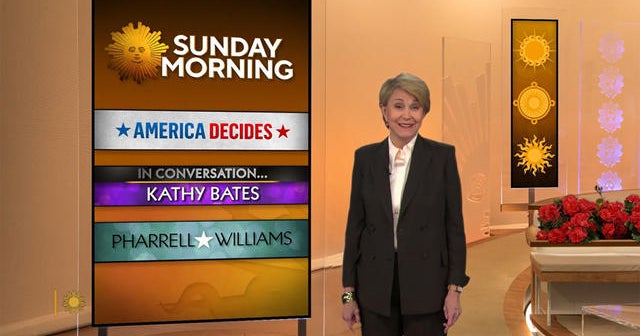
Watch CBS News
Be the first to know
Get browser notifications for breaking news, live events, and exclusive reporting.
CBS News
Sen. Mark Kelly says Americans need to know about “huge amount of misinformation” on election

Watch CBS News
Be the first to know
Get browser notifications for breaking news, live events, and exclusive reporting.


